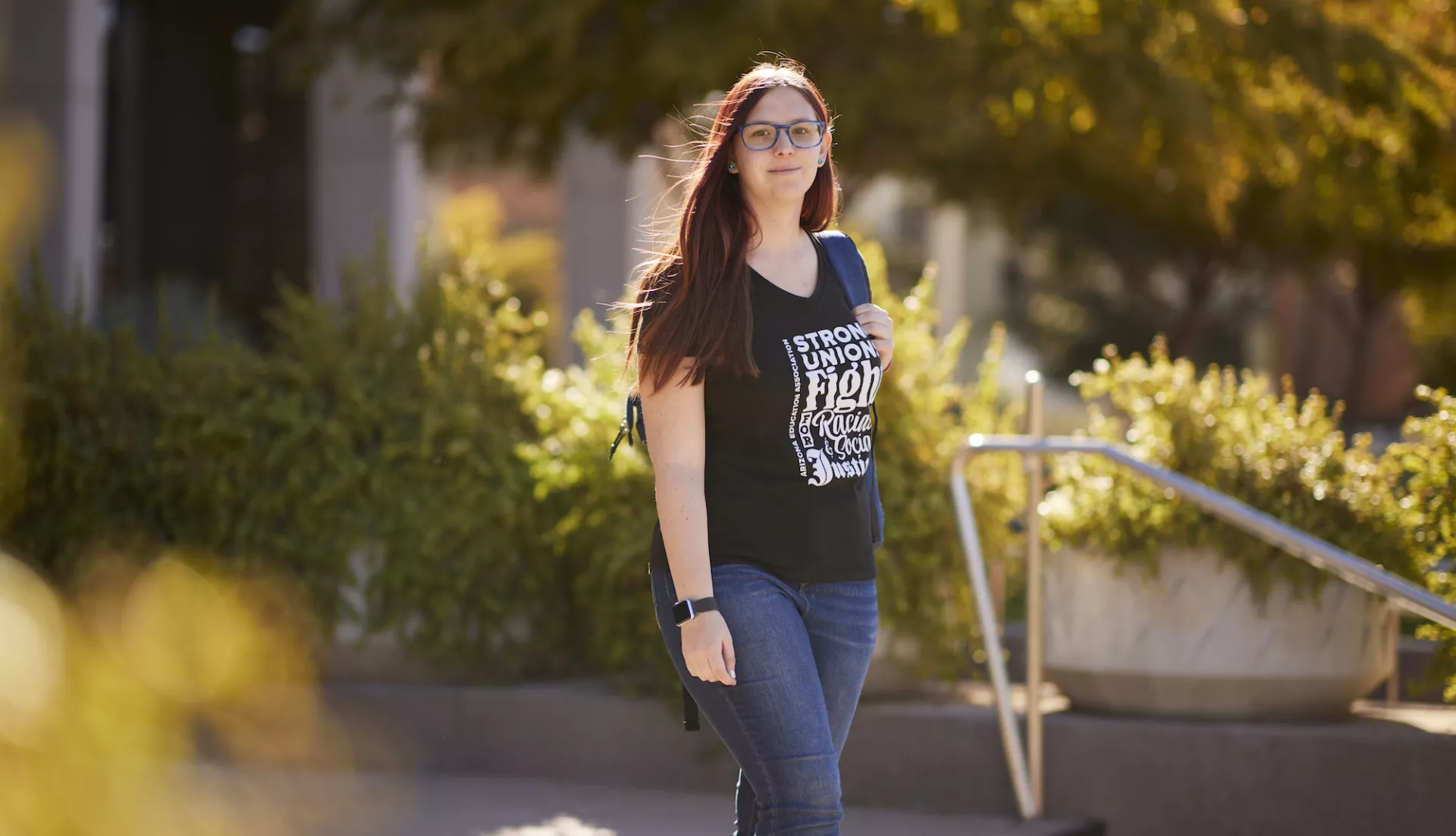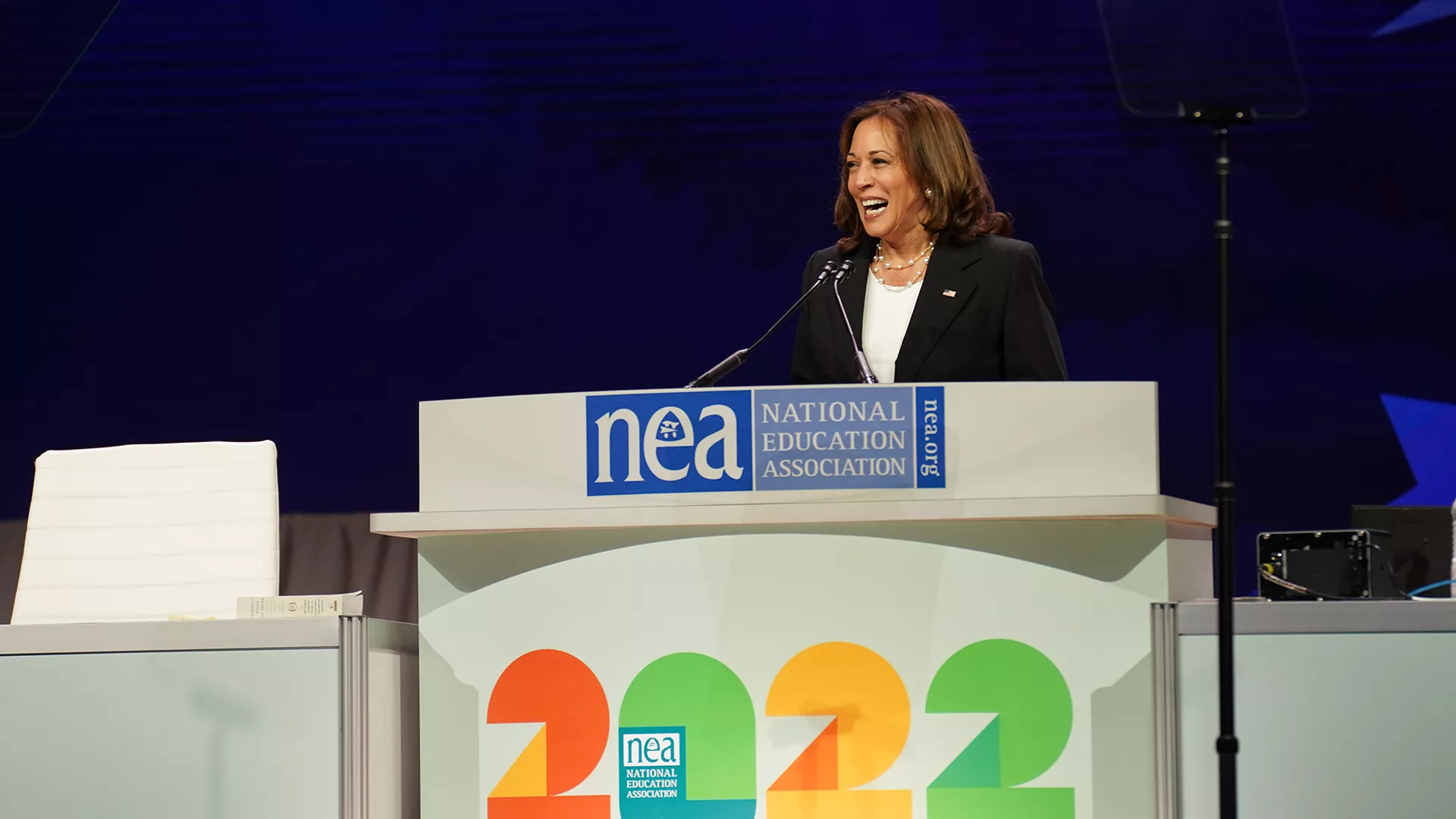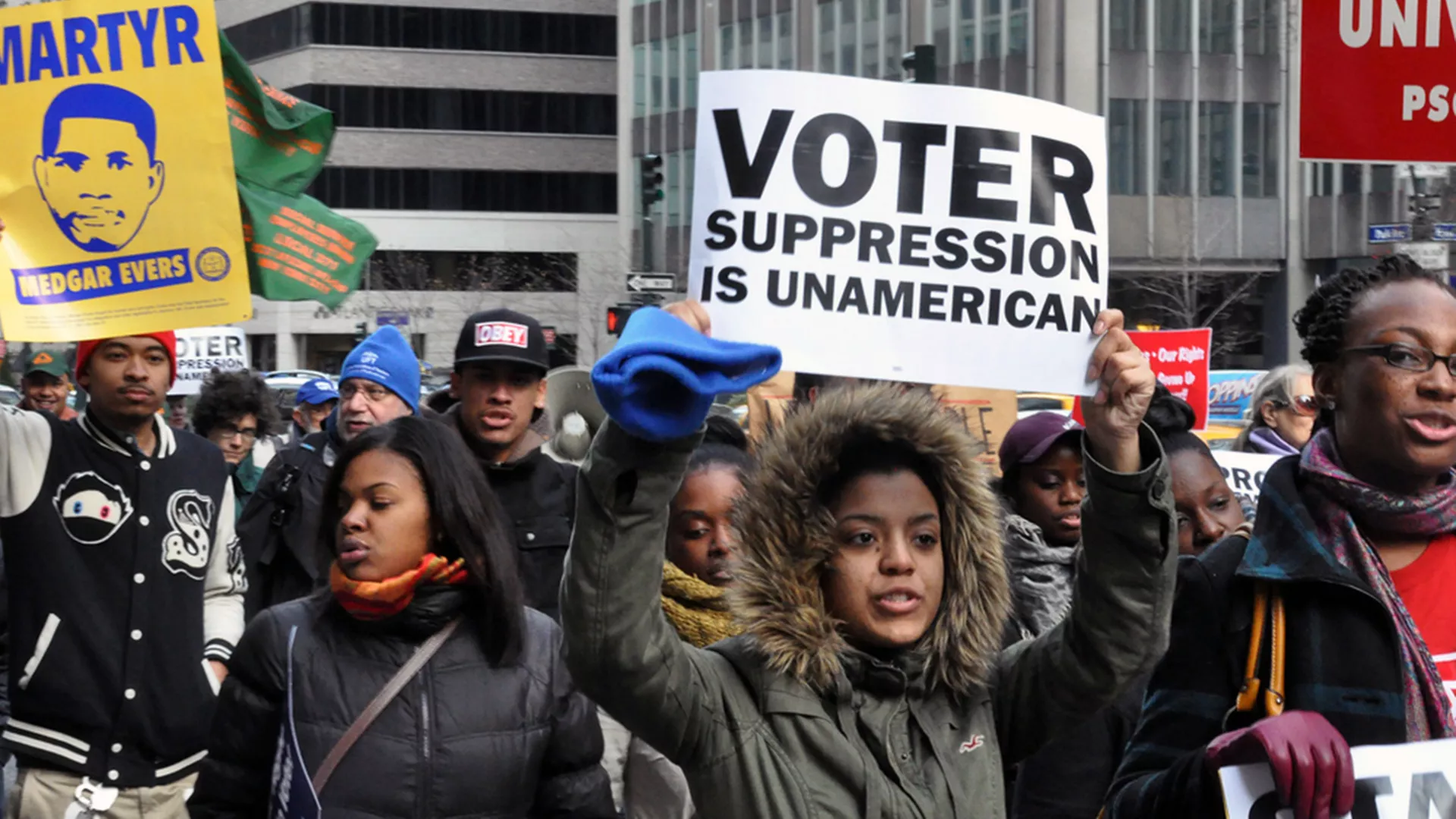Key Takeaways
- Educators throughout history have fought to protect the democratic promise of public education.
- Today, teachers preserve American democracy through their classroom teaching, demands at the bargaining table, and engagement in efforts to protect voting rights.
- “Bargaining for the Common Good” is an innovative approach that some NEA locals are using to make the collective bargaining process more democratic.
“Greatly increased cost of living.”
“Overwork in over-crowded classrooms.”
Sound familiar? These concerns were in fact raised 120 years ago by Margaret Haley, an early NEA activist and Chicago teacher, in her remarks to the 1904 NEA convention in St. Louis, Mo. Sadly, they likely still resonate with many educators today.
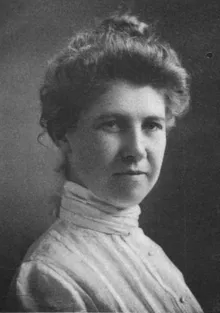
Concluding her speech, Haley contrasted the “industrial ideal” of the early twentieth century—one that “subordinates the worker to the product and the machine”—with “the ideal of democracy, the ideal of the educators, which places humanity above all machines.”
In a society that often devalued the lives of factory workers (and their children, some of whom joined them on the factory floors), Haley saw public schools as an antidote—a space for poor and working-class children to experience the joy of learning and cultivate their higher-order thinking skills and ethical awareness so that they could become meaningful participants in American democracy.
Despite her progressive views, Haley's democratic vision of public education was not racially inclusive. In her opening remarks to the 2024 NEA Representative Assembly, NEA President Becky Pringle drew upon Haley’s legacy, while also widening the scope of Haley’s vision to include all students and teachers:
“NEA, we will keep our gaze fastened on the shared vision that is our luminescent North Star: To unite not just our members, but the nation to reclaim public education as a common good, as the foundation of our democracy, and then transform it into something it was never designed to be—a racially and socially just and equitable system that prepares every student, every one, to succeed in this diverse and interdependent world,” Pringle said.
Yet, what does this lofty idea—that public education is the foundation of our democracy—really mean? Educators answer that question every day by their actions in the classroom, at the bargaining table, and on the front lines of efforts to protect voting rights.
Teaching Civics as a Participatory Endeavor
For Katelyn Condon, a high school social studies teacher in Regional School Unit # 3, in rural central Maine, teaching social studies runs in the family—her father, who taught social studies for 35 years, “was also my government teacher,” she says.
Condon embraces teaching social studies as a participatory endeavor. Two years ago she introduced an activism-based capstone project to her American government class. Students choose an issue that Human Rights Watch cites as a challenge for the U.S., trace its history, and participate in activism related to the issue.
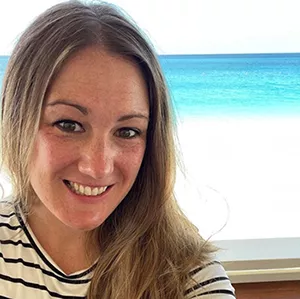
Condon's students have taken the project in various directions. One wrote an essay about climate change and submitted it to a publication. Another purchased a copy of Just Ask!, Supreme Court Justice Sonia Sotomayor’s children’s book about disability awareness and disability rights, for her local public library. One student focused on indigenous rights and “she put red hands all over the school as an awareness for the missing and murdered indigenous women,” explains Condon. Many students chose to do social media campaigns about their chosen topic.
Through these projects, Condon is attempting to teach her students that “democracy is not passive,” she says. This country, argues Condon, “was founded to produce little “d” democrats or little “r” republicans.” And public education is where students learn those civic values to keep America’s democratic experiment alive. As Condon succinctly puts it, “We can’t have a free democracy, a free healthy functioning democracy, without public education.”
Educators on the Front Line for Voting Rights
NEA member Derron Cook, a high school art teacher, in St. John the Baptist Parish, La., agrees with Condon that democracy is not passive. He has made it his mission to protect voting rights in his community.
Cook serves as president of his local NEA chapter and as vice president of his local branch of the NAACP. He also recently ran for seats on the Louisiana Democratic State Central Committee and Democratic Parish Executive Council—losing one of the races by a mere five votes. This experience “definitely spoke to me as to the importance of every vote counting and getting as many people out to vote as possible,” says Cook.
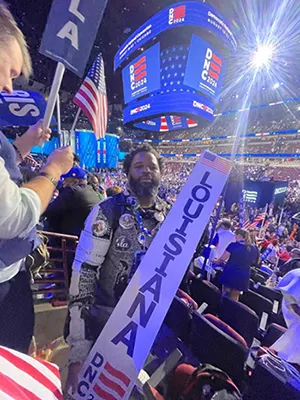
To that end, Cook helped his local registrar’s office set up a visit to his high school this September to run a voter registration drive for eligible students. He keeps voter registration forms in his classroom, and talks often with his students about “the importance of voting and the importance of activism within the community.”
Cook has assisted with many voter registration drives in his parish, and he works with a number of civic organizations “educating the community and educating voters as to new laws and how things are changing.”
One of those new laws is that ex-felons are now able to vote in Louisiana after a probationary period. In his efforts to get ex-felons and young people registered to vote, Cook reminds them “the struggle that people went through in terms of giving you this right to vote. So it is no longer a right, but it’s an obligation. Because many people have suffered, bled, and died” to obtain the right to vote. One of those people, says Cook, is Edward Hall—a Black St. John the Baptist Parish man who sued for his right to vote in the 1940s with the help of a young Thurgood Marshall.
Educators have a unique responsibility to fight for voting rights, suggests Cook, because they are ultimately role models for their students. “We want to show our students that we are here fighting every day, not just for you to succeed,” he explains, “but we’re also laying it on the line in terms of activism to make sure that you’re getting the goods that you need to succeed as well.”
Democracy at the Bargaining Table
Educators also foster democracy through employing a collective bargaining strategy called “Bargaining for the Common Good (BCG),” wherein the union attempts to bargain over issues beyond educator wages and benefits.
“Bargaining for the Common Good is both an old labor tradition and a recent labor strategy,” explains Professor Joseph McCartin, a labor historian at Georgetown University and the Executive Director of Georgetown’s Kalmanovitz Initiative for Labor and the Working Poor.
McCartin cites Haley and her fellow Chicago teachers as some of the earliest practitioners of common good bargaining. Seeking better funding for Chicago’s public schools, Haley and her allies fought for tax reforms that would force corporations to stop tax-dodging and contribute their fair share to the city’s coffers.
Yet, McCartin says, “While BCG has roots that stretch far into labor’s past, its remarkable resurrection is a relatively recent phenomenon.” He sees the harsh anti-teacher rhetoric of then-New Jersey Gov. Chris Christie in 2010 and public sector union busting of then-Wisconsin Gov. Scott Walker in 2011 as watershed moments for many teachers and public employees, who “began to realize that they had to rethink their approach to bargaining so as to build alliances with communities whose children they taught, alliances that would not be so vulnerable to the wedge-driving" of anti-union politicians.
Thus, BCG was re-born as a strategy to include broader community needs in collective bargaining negotiations, helping unions “push back effectively and begin to build a transformative alignment in their communities,” says McCartin.
Bargaining for the Common Good in St. Paul
The St. Paul Federation of Educators (SPFE) in Minnesota has been on the leading edge of the NEA’s BCG efforts.
Starting in the early 2010s, SPFE members began having community conversations and book studies to answer the questions: “What are the schools our students deserve? And who are the educators that those students deserve?,” says Erica Schatzlein, now SPFE’s lead negotiator.
Those conversations led to the release of The Schools St. Paul Children Deserve in 2013, which helped guide the union in its new approach to collective bargaining.
Schatzlein says that SPFE successfully bargained in its 2013-2015 contract for all students to have access to physical education and the arts.
In the last decade, the union has begun pushing for expanded supports for student mental health needs. While this was an issue before the COVID-19 pandemic, Schatzlein says it “has been hugely exacerbated by the pandemic” and thus “that’s been a large focus of multiple rounds now and winning additional school psychologists, social workers, and school counselors.”
In 2023 negotiations, SPFE bargaining team member Shanaz Padamsee spearheaded a “Healthy Green Public Schools” initiative to make St. Paul schools more environmentally friendly.
Padamsee, an intervention specialist for the St. Paul Public Schools online school, says that BCG “builds community and it encourages that feeling of ‘we’re all in this together.’” In the end, she says, that “really helps make democracy stronger.”
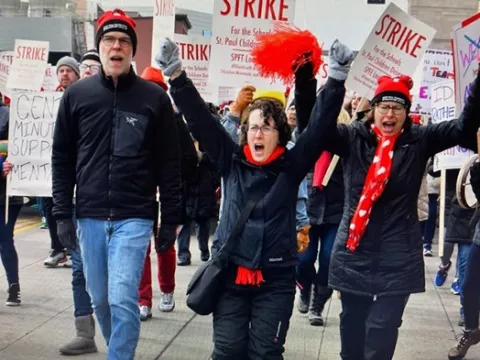
SPFE Addresses Home Foreclosure Crisis
A key characteristic of BCG is its attempt to address root causes of issues educators see in their classrooms. According to Schatzlein, in the past decade, SPFE members were seeing “really high mobility rates for some of our schools where the class of students that sat in front of you on day one, there might only be three or four of them left at the end of the year because almost the entire class has turned over.” A major contributor to this high student mobility were bank foreclosures that happened “in the middle of the school year,” says Schatzlein.
As a result, SPFE called together school district officials and representatives from some major banks in the Twin Cities and asked the banks to halt foreclosures during the school year. While “that wasn’t something we were able to gain a commitment on from those banks,” explains Schatzlein, SPFE starting this conversation was important in and of itself.
SPFE Strengthens Democracy
For SPFE, BCG goes beyond broader demands at the bargaining table; it involves a transformation of the traditional collective bargaining process as well.
“One thing that changed as we started implementing “Bargaining for the Common Good” in terms of process is really opening up negotiations to the public, to families and to our members,” explains Schatzlein. This approach, called “open bargaining,” shifts bargaining sessions to evenings after school so that anyone can attend.
Through using the BCG strategy, SPFE hopes to strengthen democracy in St. Paul. Echoing Haley and teacher union activists at the turn of the twentieth century, Schatzlein says of SPFE: “We believe that public education is a service for public good and that it should not be run like a business. It’s not about squeezing the most profit. It’s not about only looking at the data points and the test scores. It’s about looking at our schools as really the incubator of our future citizens, ... and our future community leaders.”
'We Stand at the Parting of the Ways'
Haley ended her 1904 NEA convention speech by telling delegates: “Today, teachers of America, we stand at the parting of the ways. Democracy is not on trial, but America is.” Now, 120 years later, Americans face another “parting of the ways” in a momentous election year. Will Americans choose to uphold the nation’s democratic ideals? The answer will rely in no small part on the success of dedicated teachers like Katelyn Condon, Derron Cook, Erica Schatzlein, and Shanaz Padamsee, and millions more of their colleagues nationwide.

